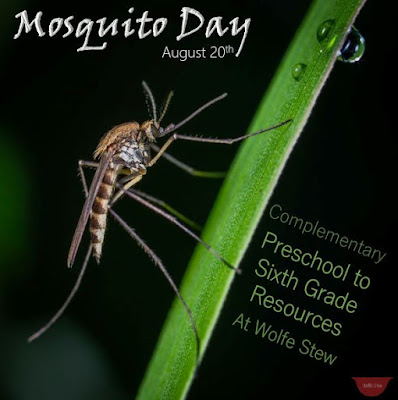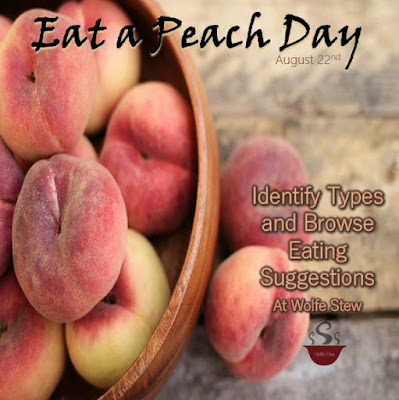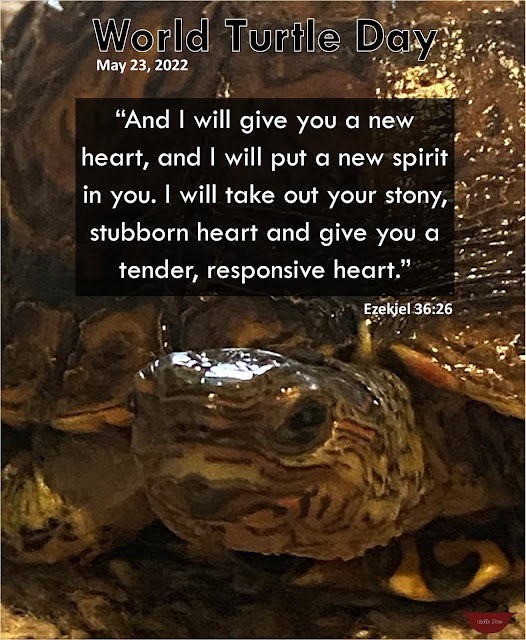August Week 3 | An Idea for Every Day
(Updated 8/4/2022)
Welcome, leaders, to Wolfe Stew. We are SO glad you’re here.
Since the last post, we have been stewing on activities for you to use with your preschool to sixth grade learners for every day of August’s third (Yikes!) week. We chose daily holidays and paired them with learning ideas from around the ‘net in an effort to bring engagement into your learning day. Check out the chosen holidays along with a brief description of practiced skills for the week spanning August 16th to 22nd. (Click the link to go directly to the described day.)
- Tell a Joke Day (August 16th Annually) - Resources and tips for leaders and learners
- I Love My Feet Day (August 17th Annually) - Health science (personal hygiene, foot anatomy); Art (painting, following directions, planning, imagining, making connections)
- Mail Order Catalog Day (August 18th Annually) - Research Skills, Writing (opinion and persuasive)
- Potato Day (August 19th Annually) - Science (plants, culinary, energy); Art (carving & printmaking); Physical Education (throwing and catching, aim, speed)
- Mosquito Day (August 20th Annually) - Reading (folktales); STEM (insects, problem-solving, engineering solutions)
- Poet’s Day (August 21st Annually) - Reading (poetry); Speaking and Listening (recitation); History (changes in poetry across time, notable poets)
- Eat a Peach Day (August 22nd Annually) - Types and eating suggestions
Good list, right? And, I think we’ve stewed on some pretty good ideas for you. Look at all the ways we’re plating them for you:
- August Calendars (2020, 2021, 2022) – Ideas at a glance with clickable links for you advanced planners.
- Weekly Blog - You’re reading it now. 😊
- SUBSCRIBE by sharing your email in the field on the left side panel to get them delivered directly to your inbox.
- Check out the four latest posts (ideas never expire):
- Even More Ideas – Look over our Pinterest board.
And now, without further ado, check out all the ideas we've been stewing on for you:
August 16th Annually – Tell a Joke Day
 |
| Girl Laughing image by Andrea Pacquadio via Pexels |
Knock. Knock.
Who’s there?
Interrupting cow.
Interrupting co…
Bok, bok, bok, bok, bok, bok-bok-bok-b-o-o-o-o-k.
It still makes me laugh, typing it now. Perhaps it’s due to
the ridiculousness of hearing the absolute wrong answer, or maybe it’s because
it was told to me by my niece (5 at the time) and therefore a combination of
the unexpected answer and the cuteness of her personality embeds it deeper in
my laughter sensors. It remains my favorite joke to this day because of the
memory. What’s yours?
Well, lucky you, today you get to tell all your favorite,
and maybe some new, jokes. It’s Tell a Joke Day. If your joke-telling skills
are a little rusty, or you’ve run out of good quality material, have no fear,
we’ve been stewing on joke-telling ideas for you.
First, you need some joke
telling tips. Leah Green offers some at The Guardian. If you want to cut to
the chase, scroll about halfway down the article and you’ll find the heading
“What I Learned,” in boldface type. Here you’ll find five concise joke-telling
tips. We need to work most on tip five: Relax. What about you? Which of the
five tips do you most need to work on?
With your list of tips in hand, you now need some material to practice them on. We’ve uncovered some joke finding resources for you and your
learner in both online and print options:
Learners
- Online Option Funology. Choose from categories of animal, bird, bug and insect, holiday, knock knock, mix & match, outer space, riddles, seasonal, and other. One we found that made us chuckle: “Why did Mozart sell his chickens? Because they kept saying ‘bach bach!’” Hmm…. I’m beginning to notice that apparently I think chicken jokes are funny.
- Print Options joke books suggested by We Are Teachers with recommended age groups. For each age group, we’d choose the following:
- PreK-1 My First Joke Book by Amanda Enright (links to Goodreads). A sample joke from the book: “How did the frog feel when it hurt its foot? Un-hoppy!”
- 2-4 Laugh Attack!: The BIGGEST, Best Joke Book EVER by Highlights (links to Goodreads). Sample joke from the book: “Why do you have to be careful when it’s raining cats and dogs? So you don’t step in a poodle.”
- 5-6 Joke-Lopedia: The Biggest, Best, Silliest, Dumbest Joke Book Ever! by Eva Blank, et al. via Open Library (hoopla edition) A sample joke from the book: “Book title we’d love to see: Are You a Liar? By I.M. Knott”
Leaders
- Online Option Jokes of the Day. Not only can you view and vote on the jokes of the day, but you can also browse their archives. Archive categories include: short, policeman, lawyer, Christmas, Friday, beer, blonde, doctor, Thanksgiving, Monday, April Fool’s Day, Halloween, or you can browse by date. The favorite joke of the day when we browsed: “A sweater I bought was picking up static electricity, so I returned it to the store. They gave me another one, free of charge.”
- Print Options suggested and categorized by Spy. Each joke book selection was intentionally made for men, women, children, and gifting (among others). The joke book these authors named the funniest: The Comedy Thesaurus (links to Goodreads) featuring a variety of artists and alphabetically arranged to ease your search for specific topics.
We’re dying to read your best (kid-friendly) joke. Go on. Leave it in the
comments or email it to us (mr OR mrs@wolfestew).
August 17th Annually – I Love My Feet Day
 |
| Feet in the Rain image by Alicai Zinn via Pexels |
Honestly, I don’t love my feet. I’m ashamed to say that. I
hardly ever see them because I stuff them in socks all day long. I remember a time
when flipflops reigned and tennis shoes only appeared during strenuous
activity. But today, it’s quite the opposite. Indeed, a pair of flipflops I
don’t even own. Perhaps today's activities will help me reconnect with my
feet. If you need to reconnect with yours, or you’d like to inspire your
learner to love their feet, then you’d love to see these activities we’ve been
stewing on for you.
Teach your learners how to care for their feet with this post at
You Are Mom. There, they’ll learn about cleaning, cutting toenails, and wearing the right shoes and socks. We learned walking around barefoot is good for your feet! So, when inside, shed those shoes.
And, since you’re
already barefoot, why not make art with your lovely feet. We’ve gathered some ideas for you and put them on our Pinterest board. When we clicked the
link, however, it took us to the August page instead of the “I Love My Feet
Day” section specifically. If it does the same to you, just scroll down until
you see the “I Love My Feet Day” heading. Otherwise, Google more foot art
options, or go with the ones we feature below.
Preschool to First Graders plant their foot on a
plate to make this adorable baby shark (pin uploaded by Robin Daniels via Pinterest)
craft. It looks to us as though you’d have your learner follow these steps: 1)
Use blue paint to make the ocean. 2) Let it dry. 3) Let your leader paint your
foot gray, then carefully step on the middle of the plate with your wet foot. 4)
Allow the paint to dry while you clean your foot. 5) Decorate the baby shark
with googly eyes and permanent marker. 6) Carefully title your art with Baby
Shark or (name of learner) Shark. Of course, the whole time you’re working,
you’d be missing out on an opportunity if you didn’t listen to "Baby Shark" (links to
YouTube video by gongbearcute) and practice the dance moves during drying
times.
Get your Second to Third Grade learners ready for
back to school with this foot pencil craft
uploaded by Philly Mean Mugs
on Pinterest. Learners this age are likely ready to see the end product and
devise a plan to get there. You are more than welcome to try it out this way.
Display the picture and ask your learner the steps they’ll take to achieve the
desired end product. If you’d like, turn it into a procedural text writing
opportunity. If you like using templates with your learner, we like Jacinta
H.’s procedural writing template via Teachers Pay Teachers. It contains all necessary
components (title, goal, materials/ingredients, steps, and conclusion) in a
simple design. If, however, you’d rather jump in feet first, we’d suggest the
following procedure: 1) Paint your feet yellow. 2) Carefully step onto the
middle of a piece of paper with your wet foot. 3) Clean your foot while the
paint dries. 4) Draw and color in a dark gray rectangle topped by a pink
rectangle above the toes of your painted foot impression. This will represent
the eraser and the metal piece that attaches the eraser to the pencil. 5) Use a
yellow marker and ruler to draw diagonal lines from the sides of your foot to make the pencil point at the intersection. 6) Draw a horizontal line that connects with the two diagonal lines to separate the lead from the wood. 7) Color or paint the wood with tan and the lead in black.
Let creativity guide your Fourth to Sixth Grade learners
in this open-ended art activity. Begin by having them paint their foot (any color)
and make a footprint on a piece of paper. Next, have them determine what to
make out of their footprint. The book, It
Looked Like Spilt Milk by Charles Green Shaw (via Open Library), might
be good inspiration here. Once they “see” something in their footprint and have
planned how to bring it out, let them get to work. Here is one example of what
they might create – a footprint T Rex
(uploaded by Courtney Gawel to Pinterest). If you’d like to limit their
choices, give them a theme. It could even involve a current topic of study -
plants, animals, geographical features, book related, famous people from
history etc.
If you want to share your foot art, we’d love to see. Email
us a picture (mr OR mrs@wolfestew.com).
August 18th Annually – Mail Order Catalog Day
 |
| Catalog image by Micheile Henderson via Unsplash |
Do you get any? We get Oriental Trading, MindWare, and
Lakeshore Learning. I think that’s it, although I’m likely missing a few. Do you
remember getting any as kids? I don’t know if Scholastic counts, but I remember
Scholastic, the BMG Music Club, and Olympic Sales Club. Well, if you don’t
already get mail order catalogs for your learners, let me tell you, our
learner loves looking through our Oriental Trading catalog. He’ll circle every
item of interest to him and some that he thinks we will find useful for varying
reasons. We’ve found a few ways to turn Mail Order Catalog Day into a
learning opportunity. Check out these Mail Order Catalog learning activities
we’ve been stewing on for you.
Have your learner browse Catalogs.com’s children’s section and choose a catalog that interests them. To make the selection
process easier, preselect options for them - opening a separate tab for each
magazine of consideration. You know your learner best, so choose a number of
options they can handle. We’d suggest fewer options (3-5) for younger learners
and more for older (7-10).
Once they’ve chosen their catalog, have them formulate an
opinion statement (PreK-1st
Grade template by 1st Grade is WienerFUL via Teachers Pay
Teachers), opinion paragraph (2nd-3rd
Grade OREO template by Our Cool School) or persuasive paragraph (4th-6th
Grade persuasive writing template via Education.com) about what makes it the best choice.
We’d love to read your learner’s opinions or persuasive
writing pieces. Send us a copy via email (mr or mrs@wolfestew.com) and we’ll be sure to get
back to you!
August 19th Annually – Potato Day
 |
| Potato image by Lars Blankers via Unsplash |
Po-ta-to. Say it with me. I know it gets a bad rap, and
we’re not just talking aluminum foil, but poor potato really is not as evil as
it’s made out to be. If you want to read more on the potato, head over to our
post, “10 Things We Bet You Didn’t Know about the Potato.” If you’re already team
potato and ready to smash potato learning, check out these fun activities we’ve
been stewing on for you.
Potato Experiments
Everyone loves a good experiment, and we’ve rounded up three
smashing suggestions for varying age groups.
Let your little sprouts (Preschool to First Grade learners)
grow their own sprouts in this Science Buddies activity. You’ll need a knife,
peeler, cutting board, sweet potato, measuring tape, toothpicks, cups, a warm,
sunny window, and ten weeks’ time. Every third day, you’ll make potato
observations on peeled and unpeeled halves. Then, after ten weeks you’ll decide
whether peeled or unpeeled potatoes grow the most sprouts. Science Buddies’ resources include background information, a materials list, a
thorough procedure guide with a data collection sheet, variation suggestions, and additional potato learning opportunities.
We think your Second and Third Grade learner would
like to know how to make a crispy French fry. And with this experiment at Science Buddies,
that’s exactly what they’ll figure out. You’ll need potatoes, some common
kitchen utensils and ingredients, a lab notebook, and 2-5 days’ time. The
variable you’re testing: soaking the potatoes. Science Buddies’ resources include background information, a materials list, a
thorough procedure guide with a data collection sheet, variation suggestions, and additional potato learning opportunities.
Power up your Fourth to Sixth Grade learner’s
understanding of energy with Teach Engineering’s Potato Power lesson plan. Using pennies; nails; wires with alligator clips; a
low-current, light emitting diode clock; potatoes and an included worksheet,
learners will power a clock using their potato. Teach Engineering hosts a video
demonstrating the process; a summary; engineering connection description;
listed learning objectives and educational standards; a detailed materials list
(including an option to buy a kit from Amazon); downloadable worksheets; an
introduction; background information; procedure explanation; related vocabulary
with definitions; pre, during and post activity assessment opportunities;
troubleshooting tips; extension activities; and scaling suggestions.
Potato Art
Put your mark on your art when you use potato prints.
Fun Stuff to Do will walk you through this addicting art activity. She starts
with an explanation of how to use a cookie cutter (PreK-2nd Grade) as
your stencil for making your stamp and ends with open-ended inspirational ideas
(3rd-6th Grade), including what to do with your potato
prints. From creating pictures to making wrapping paper, there’s no doubt about it, Fun Stuff to Do knows their way around potato prints.
Potato Fitness
When it comes to thinking of potatoes and kids, the game hot potato always comes to mind! Visit Care.com for the classic and variations.
We like the “Take a Step Back,”
variation. In this game, suitable for small groups, each player takes one step back at the end of each successful round of play. Successful meaning the “potato” was never dropped.
As you see, a potato really is useful in more than just your stew. Although we’ll admit, it’s good there too!
August 20th Annually – Mosquito Day
 |
| Mosquito image by Egor Kamelev via Pexels |
Bzzzz. Smack. You missed again. Those mosquitoes are
annoying! Anyone else the one who ends up with 10 times the bites of everyone
else around them? Find out some reasons why and engineer mosquito repelling
solutions with the help of this literacy unit and Mystery Doug investigation we’ve stewed on (and
taste-tested) for you.
Have your Preschool to Second Grade learner discover why mosquitoes buzz with this folktale unit from As We Walk Along the Road
that features activities to support the book Why
Mosquitoes Buzz in People’s Ears by Verna Aardema. We suggest, before
you read the book or dive into the activities, that you ask your learner why
they think mosquitoes buzz in people’s ears. Have a conversation about their
thoughts. Write their ideas down. Expand on them. Then, when you’re ready, pull
out the book and read it together. Finally, choose from the activities provided
and suggested at As You Walk Along the Road. Her activity pack includes
vocabulary practice and story sequencing cards, a cause-and-effect worksheet,
pages to narrate a retelling, and an onomatopoeia activity. We’d choose the narration but opt to have
our learner write a story to support their own explanation for why mosquitoes
buzz in people’s ears.
Task your Third to Sixth Grade learner with devising a plan to get rid of them. Learn about them first with these resources: Bugged by Michelle Knudsen; illustrated by Blanche Sims (Goodreads, epic!); 46-Million-Year-Old Mosquito (an article from Cleverly Smart); Mosquito Metamorphosis Wheel (via Bug Out BVI); and "Mosquito Facts for Kids" (Pest World for Kids). Then, have your learner plan and enact a mosquito ridding solution. Your backyard will thank you.
Who knows? Perhaps after all this mosquito learning, the
next time you hear or encounter one, maybe you’ll find them interesting as well
as annoying.
August 21st Annually – Poet’s Day
 |
| Rose in Book Image by congerdesign via pixabay |
You’re a poet, and you didn’t know it. Trite, I know, but
true. There’s a poet in all of us, it just reveals itself more readily in some than others. While the poet learning activities are limitless, the ones
we’ve stewed on for you this week focus mostly on experiencing and reciting
established poet’s poetry. So open that mic and polish up those pieces, then prepare
for a poem performance that pleases.
Choose Your Poem
Explore online (with The
Children’s Poetry Archive) or in books (Book Riot booklist) for a poem that excites.
The Children’s Poetry Archive is an ideal site when
searching for kids’ poetry because all poems are age appropriate. You can
search by type, poet, theme, age range or open query, and all poems have audio
recordings. We enjoyed “Please do not feed the animals…” by Robert Hull.
Book Riot recommends 50 poetry books for kids sorted by age bracket. From each bracket, we’d check the following out first:
- Babies and Toddlers Wee Rhymes: Baby’s First Poetry Book by Jane Yolen, Illustrated by Jane Dyer (links Goodreads’ page)
- Elementary School Knock at a Star: A Children’s Guide to Poetry by X. J. Kennedy, Dorothy M. Kennedy, and Karen Ann Weinhaus (via Open Library or Hoopla)
Explore poetry across time by having learners choose
preferred poets to feature on a timeline (search Poetry
Foundation by school/period – make sure to select the “suitable for children”
tag on the side). After choosing and recording a poet from each period, take a
moment to discuss what they notice about the change in poetry over time. Then,
have them select their absolute favorite poet from the timeline. Finally,
instruct them to select a poem from their preferred poet’s complete work to
bring into the recitation stage.
Practice Recitation
After poem selection, it’s time to prepare for recitation.
Get your learner ready using these tips from Poetry 4 Kids. Kenn Nesbitt, the owner of
Poetry 4 Kids, provides many recitation suggestions, but the one we love most
is to have fun doing it. After all, if you’re not having fun your audience
will know it.
August 22nd Annually – Eat a Peach Day
 |
| Peach Basket image by u111116 via pixabay |
Juicy, soft, fuzzy flavor sliding down your chin. Now this
is a day to literally sink your teeth in. Whether fresh and raw or prepared
with love, peaches and resulting dishes are something we think of. If you’re in
search of peachy inspiration, then check out these preparations we’ve stewed on
for you.
You likely know there are different types
of peaches, but do you know which type is
best for eating, how to ripen them, or which type to cook? To answer these
questions and more, check out this Good
Housekeeping article.
Now that you know more about types of peaches, it’s time to
discover new ways
to eat them. We like Butter with a Side of Bread’s list because it’s
simple, yet full of variety, with raw and cooked options available. One we’d
like to try: peach
ice cream.
Before You Go
We’d love to know:
- Would you rather perform poetry or tell a joke?
- What positive event from last week are you carrying with you into next week?
That wraps up this week’s ideas for every day, leaders.
Thank you for choosing to spend part of your day with us. Until next week, we
sincerely hope you find the JOY in every day.
At Your Service,
 Interested in even more educational resources? Then stop by our Learning Lab. It's here where we store all the educational resources we've cooked up to date.
Interested in even more educational resources? Then stop by our Learning Lab. It's here where we store all the educational resources we've cooked up to date.


Comments
Post a Comment
Thank you for adding your flavor to the stew.